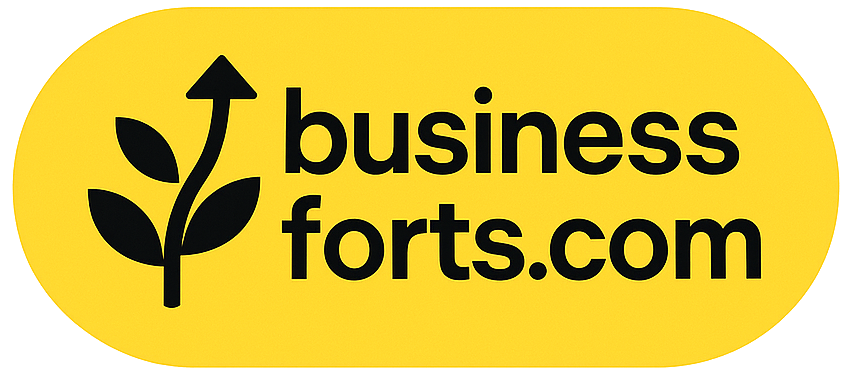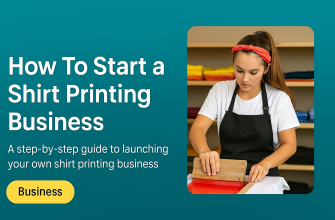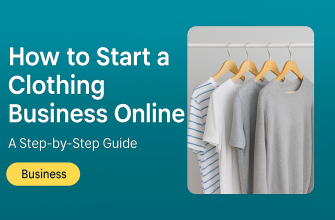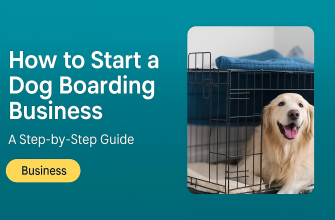Soy Alex Rivers, coach de negocios para mujeres, y me emociona que estés aquí con un interés especial en un nuevo emprendimiento. Quizás nunca hayas tenido un negocio o estés compaginando tu familia y tus sueños. Créeme, empezar un negocio de retirada de basura puede ser la opción perfecta: ofrece flexibilidad, una gran demanda y la oportunidad de ayudar a las personas a despejar sus vidas. En esta guía, combinaremos charlas motivadoras con pasos prácticos: desde la planificación y el presupuesto hasta las licencias y el marketing. Aprenderás a convertir tu... se puede hacer actitud hacia un próspero servicio de transporte de basura, paso a paso.
- Paso 1: Encuentra tu motivación y comprende el negocio
- Paso 2: Crea un plan de negocios sencillo
- Paso 3: Configuración legal: registro, licencia y seguro
- Paso 4: Calcule los costos iniciales y obtenga financiación
- Paso 5: Obtenga el equipo y prepárese para operar
- Paso 6: Establezca precios y comercialice sus servicios
- Paso 7: Lanzamiento, prestación de un excelente servicio y crecimiento de su negocio
- ¡Lo tienes!
Paso 1: Encuentra tu motivación y comprende el negocio
Primero que todo, hablemos de qué Un negocio de retirada de basura lo es. No es glamuroso, pero es un trabajo honesto y muy solicitado. Imagina a un propietario respirando aliviado después de retirar un colchón viejo, muebles rotos o esa pila de cajas en el ático. Esa sensación de hacer que el espacio de alguien sea fresco y funcional: ese es un trabajo gratificante. Como mujeres, a menudo destacamos en la organización, la resolución de problemas y el cuidado de los demás. Estas fortalezas nos hacen excelentes para ayudar a los clientes a lidiar con el desorden. Quizás ya conozcas la esencia de este negocio: te preocupas por tu comunidad y te encanta poner orden en el caos.
¿Por qué retirar basura? Primero, es necesario: la gente siempre tiene cosas de las que necesita ayuda para deshacerse, ya sea al mudarse, limpiar una propiedad o simplemente al ordenar. El sector está creciendo a medida que las vidas ajetreadas y las compras en línea dejan más basura. Segundo, es flexible: tú decides tu horario y cuántos trabajos aceptas. Si eres madre, puedes trabajar los días de clase y tomarte los fines de semana libres, o viceversa. Tercero, estarás haciendo un buen trabajo: reciclando, donando objetos útiles y manteniendo los vertederos menos llenos. Incluso puedes especializarte, quizás enfocándote en la eliminación ecológica o atendiendo a personas mayores que necesitan ayuda para reducir su tamaño.
Sé que empezar algo nuevo puede ser intimidante, sobre todo si nunca has dirigido un negocio. Pero recuerda: todo experto empezó como principiante. Tú ya tienes habilidades valiosas: comunicación, paciencia y determinación. Con un plan claro y la voluntad de aprender, tú... puede ¡Tú triunfas aquí! Muchas mujeres han creado servicios rentables de retirada de basura (¡algunas incluso franquicias!) gracias a una planificación inteligente y un trabajo constante. Así que respira hondo y anímate: ¡tú puedes!
Paso 2: Crea un plan de negocios sencillo
A continuación, plasmemos algunas ideas. Un plan de negocios puede parecer intimidante, pero por ahora, considérelo una hoja de ruta o simplemente una lista de notas. No necesita un documento de 50 páginas. Incluso un plan de una o dos páginas es suficiente para mantener la concentración. Esto es lo que debe cubrir:
-
Lo que harás: Describa sus servicios. ¿Retirará muebles viejos, electrodomésticos, desechos de jardín o todo lo anterior? ¿Hará limpieza residencial, comercial o ambas? Indique exactamente qué hará y no manejar (por ejemplo, la mayoría de los recién llegados evitan los materiales peligrosos).
-
Su mercado objetivo: ¿Quiénes serán sus clientes? ¿Propietarios de viviendas? ¿Arrendadores? ¿Pequeñas empresas? ¿Quizás personas mayores que se mudan a una vivienda más pequeña o familias que se mudan? Imagine un día en su vida: ¿qué problema les está solucionando?
-
Operaciones: Describe cómo funcionará tu negocio. Por ejemplo, «El cliente me llama, le doy un presupuesto, programo una recogida y llevo la basura al vertedero o al centro de reciclaje». Incluye pasos clave, como la necesidad de que alguien te ayude con trabajos grandes o las normas para levantar objetos de forma segura.
-
Plan de marketing: Piensa en cómo llegarás a esos clientes. Algunas ideas incluyen el boca a boca, folletos en tu barrio, una página de Facebook o una simple ficha de Google Business. (Más adelante explicaremos esto con más detalle).
-
Costos de inicio: Anota aproximadamente los costos esperados (pronto entraremos en detalles). Incluye los gastos principales: un camión o furgoneta, herramientas y equipo, licencias, etc.
-
Estrategia de precios: Decide cómo cobrarás. Los métodos más comunes son por camión, por hora o por volumen (como "por yarda cúbica"). Anota cómo podrías estructurar tus tarifas (por ejemplo, "Media carga hasta X yardas cúbicas = $Y, más gastos de descarga").
-
Objetivos: Establece una o dos metas. Quizás "Conseguir 10 trabajos en los primeros 3 meses" o "Ahorrar $X en el primer año". Las metas te mantienen motivado.
Puedes organizar estas secciones con viñetas. Escribirlas le da un toque de realismo a tu plan y te muestra dónde enfocarte. También te ayudará hablar con un mentor, un banquero o un amigo que te apoye sobre tu idea; sonarás seguro. Recuerda, este plan es para... usted Primero. No importa si cambia después. El objetivo es convertir tu sueño en acciones concretas.
Paso 3: Configuración legal: registro, licencia y seguro
Bien, ya tenemos la visión y el plan. Ahora, abordemos los trámites oficiales. Primero, elige un nombre comercial atractivo y fácil de recordar (algo como "Alex's Junk Away", si ese es tu nombre). Asegúrate de que nadie más en la zona lo use. Luego, registra tu negocio. Dependiendo de dónde vivas, podrías operar como... empresa individual (el más simple), o formar una LLC (sociedad de responsabilidad limitada) para proteger sus bienes personales. Una LLC es muy popular porque mantiene sus finanzas personales separadas en caso de accidentes; su costo suele ser de entre $50 y $150, dependiendo del estado. Si todo esto le parece confuso, sepa que muchos estados tienen guías claras para pequeñas empresas o incluso... portales gubernamentales en línea Para guiarte en el proceso. Una búsqueda rápida en Google como "registrar pequeñas empresas [Tu estado]" debería llevarte al lugar correcto.
Probablemente también querrás un Número de identificación fiscal (EIN) (Número de Identificación del Empleador) del IRS. Es gratis y fácil de obtener en línea. Incluso si es un solo propietario, un EIN le permite abrir una cuenta bancaria comercial y contratar empleados más adelante si lo desea.
Próximo: licencias y permisosCada ciudad o condado tiene sus propias reglas. Como mínimo, probablemente necesitarás un... licencia comercial o permiso para operar legalmente; esto suele costar solo entre $50 y $100 al año. Si conduce un camión para trabajar, verifique si necesita una matrícula de vehículo comercial o un permiso especial de transporte en su zona. Además, al transportar basura al vertedero, algunos vertederos exigen un permiso de transportista de residuos o un plan de eliminación de pago por uso. Parece complicado, pero las agencias locales (como el ayuntamiento, la secretaría del condado o el departamento de saneamiento) suelen tener listas de verificación o líneas telefónicas para orientar a los nuevos dueños de negocios.
Si alguna vez planea retirar objetos peligrosos (como pintura vieja, productos químicos o asbesto), necesitará permisos especiales. Como principiante, limítese a la basura común (muebles, electrodomésticos, desechos de jardín) y podrá preocuparse por eso más adelante.
Por fin, seguroSé que el seguro puede parecer un gasto más, pero es... entonces importante. Un básico seguro de responsabilidad civil general La póliza (para cubrir daños a la propiedad o lesiones) podría costar unos cientos de dólares al año. Agregar seguro de automóvil comercial para su camión, que podría rondar entre 1TP y 1,000 y 2,000 T/año. Si contrata personal, necesitará compensación laboral Seguro también. Habla con un agente de seguros sobre un paquete para la retirada de basura o cobertura para pequeñas empresas; te aconsejarán lo que necesitas. Proteger a tu familia y a tu negocio de accidentes vale cada centavo.
Todo este proceso legal puede parecer aburrido, pero considérelo como construir una base sólida. Una vez hecho, podrá gestionar su negocio con confianza, sabiendo que está cubierto y cumpliendo las normas.
Paso 4: Calcule los costos iniciales y obtenga financiación
Hablemos de números. ¿Cuánto dinero necesitas realmente? iniciarLa buena noticia es que la eliminación de basura puede ser asequible en comparación con muchas empresas, especialmente si empiezas con poco dinero.
-
Vehículo: Este suele ser el mayor costo. Si ya tienes una camioneta o furgoneta de carga, ¡es una gran ventaja! Si no, tienes opciones: algunas personas... comprar usado Camiones (quizás entre 1TP y 1T10 000 y 1TP y 20 000, según el modelo y el estado). Otros alquilar O alquila un camión inicialmente; por ejemplo, alquila un U-Haul solo cuando tengas trabajo. El alquiler es más caro por viaje, pero si al principio hay pocos trabajos, ahorras al principio. Elige lo que se ajuste a tu presupuesto.
-
Equipamiento y herramientas: Los suministros esenciales no son demasiado caros. Piensa guantes resistentes, gafas de seguridad, botas de trabajo y casco Para su protección (alrededor de $50–$100 en total). Necesitará un carretilla o carretilla de mano Para mover objetos pesados (alrededor de $100–$200), un juego de correas y lonas para asegurar cargas ($50–$100), y un básico kit de herramientas (martillo, palanca, llave inglesa) quizás $50–$100. A carro de plataforma o carro utilitario Es útil si alguna vez tienes que mover muebles. En total, podrías gastar entre $500 y $1000 en equipo y herramientas al principio.
-
Tarifas de eliminación: Cada vez que lleves basura a un vertedero o centro de reciclaje, hay una tarifa (normalmente de $10 a $50 por viaje, según la ciudad y el tamaño de la carga). Planifica un par de vertederos por semana durante el primer mes y reserva de $100 a $200 para estos primeros viajes.
-
Suministros de oficina/Configuración: Incluso las empresas que funcionan desde casa tienen costos pequeños: quizás entre 1TP y 200 T en total por un plan de teléfono o Internet (si necesita una segunda línea telefónica o datos para mapas) y una computadora portátil o un software de facturación simple (hay opciones gratuitas en línea).
-
Marketing: Para el lanzamiento, necesitarás un plan de marketing básico. Se pueden imprimir tarjetas de presentación y folletos por $100–$200. Un plan básico Perfil de Google Business Es gratis y puedes crear páginas sencillas de Facebook/Instagram sin costo. Podrías invertir entre 100 y 300 dólares en publicidad en línea o en directorios cuando estés listo.
-
Licencias y seguros: Desde el último paso: licencia comercial, digamos $50–$100; presentación de LLC, alrededor de $50–$150; primas de seguro, quizás $500–$2,000/año en total (aunque puede pagar mensualmente).
Súmalo: si ya tengo un vehículo adecuadoPodrías iniciar este negocio con tan solo $2,000–$3,000centrándose únicamente en herramientas, licencias y marketing. Si usted... necesito un camión, planificar más – tal vez $8,000–$15,000 El costo total para comprar una camioneta usada y equipo es de aproximadamente $100, aunque puedes distribuir algunos costos o comenzar con alquileres. Recuerda que estas son cifras aproximadas; los precios varían según la región.
¿Cómo pagarlo? Puedes usar ahorros personales o inversiones de familiares o amigos. También hay... préstamos para pequeñas empresas y microcréditos Dirigido a mujeres emprendedoras. La Administración de Pequeñas Empresas de EE. UU. (SBA) ofrece recursos y enlaces a prestamistas, y algunas organizaciones sin fines de lucro ofrecen subvenciones o préstamos sin intereses para startups propiedad de mujeres. Investiga los Centros de Mujeres Empresarias locales (que suelen formar parte de la SBA); pueden orientarte sobre financiación. Otro consejo: empieza a generar ingresos de inmediato haciendo pequeños trabajos para los vecinos mientras te instalas. Cada dólar que ganes puede reinvertirse en el crecimiento del negocio.
La clave es empezar a inclinarseNo necesitas un camión enorme ni un equipo desde el primer día. Consigue lo necesario para atender a tus primeros clientes y luego reinvierte las ganancias para crecer. Lleva un registro de cada gasto para saber adónde va tu dinero. Planificar tu presupuesto con honestidad te dará confianza, no te abrumará.
Paso 5: Obtenga el equipo y prepárese para operar
Con el dinero asegurado, es hora de prepararse. Primero, asegure su vehículoAsegúrese de que sea confiable y seguro: revise los frenos, las llantas, las luces y que pueda soportar cargas pesadas. Si compra uno usado, hágalo revisar. Límpielo y, si lo desea, añada el nombre o logotipo de su empresa en las puertas o un imán (incluso una calcomanía casera con información de contacto puede darle una imagen profesional en la carretera).
A continuación, reúne a tus equipoAquí tienes una lista práctica de lo que necesitarás:
-
Equipo de protección: Los guantes de trabajo, las gafas de seguridad y las botas resistentes son imprescindibles para cualquier trabajo.
-
Ayudas para el movimiento: A carretilla/carretilla de mano (con correas) y una carro de plataforma o de plataforma plana Facilitan mucho el levantamiento de objetos pesados. Si planea mover muebles o electrodomésticos grandes, considere deslizadores de muebles o un plataforma para subir escalerasEstos pueden ser un poco caros (varios cientos de dólares para artículos especiales), así que compre usados o alquile para empezar si es necesario.
-
Herramientas: Mantén un conjunto de herramientas básicas útiles: martillo, destornilladores, llaves inglesas, palanca (para desmontar muebles), linterna y un cuchillo multiusos.
-
Sujetadores: Correas de amarre, cuerdas elásticas y correas de trinquete Son imprescindibles para asegurar las cargas en su camión. Lonas o mantas de mudanza Proteja sus artículos y su vehículo.
-
Contenedores/Bolsas de basura: Abastécete de bolsas de basura resistentes para residuos pequeños y ten algunos contenedores de plástico o contenedores con ruedas para cargar artículos pequeños.
-
Otro: Soga, escalera de cuerda, fundas para muebles, guantes de algodón (para artículos frágiles), y un botiquín de primeros auxilios También debería estar en tu camión.
A menudo se pueden encontrar buenas ofertas en equipos usados. Pregunte a las empresas de mudanzas locales si venden carretillas viejas o consulte los mercados en línea. También, busque centros de donación o bancos de reciclaje que podrían recibir las cosas que usted lleva (dándole un recibo de impuestos) en lugar de pagar por su eliminación.
Ahora, planifique sus rutas de eliminación. Investigue Dónde tirar la basura En su zona. Las opciones más comunes incluyen:
-
Vertedero local/estación de transferencia: Cobran una tarifa por carga. Infórmate sobre sus horarios y tarifas.
-
Centros de reciclaje: Para artículos como televisores viejos (basura electrónica), chatarra o cartón. Algunos centros pagan por la chatarra.
-
Centros de donación/Tiendas de segunda mano: Para muebles y artículos del hogar en buen estado (Habitat ReStore, Goodwill, Ejército de Salvación, etc.). Esto representa un gran valor añadido para los clientes y, en ocasiones, permite la exención de las tasas de vertido.
-
Instalaciones de residuos peligrosos: Si alguna vez lleva artículos como baterías o pintura, existen puntos de entrega especializados, pero generalmente solo con cita previa.
Tener esta lista significa que cuando llenes tu tanque de basura, no perderás tiempo pensando a dónde ir.
Seguridad ante todo: Por último, recuerda que este trabajo puede ser físicamente exigente. Si algo es demasiado pesado o incómodo, no te fuerces la espalda. Usa la técnica de levantamiento en equipo o lleva ayuda extra. Puedes contratar ayudantes a tiempo parcial a medida que creces, lo que hace que este negocio sea más accesible incluso si levantar objetos pesados aún no te resulta fácil. Puedes concentrarte en la gestión y la atención al cliente mientras tu equipo se encarga del levantamiento de cargas.
Paso 6: Establezca precios y comercialice sus servicios
Con su plan, permisos y equipo en orden, está listo para ofrecer sus servicios, pero primero, decida cómo fijar el precio y cómo informar a la gente sobre su negocio.
Precios: Existen algunos métodos comunes para la eliminación de basura:
-
Por volumen (espacio del camión): La mayoría de las empresas cobran según el espacio que ocupa su basura en el camión (en yardas cúbicas). Por ejemplo, “Media carga (hasta 5 yardas cúbicas) = $X, Carga completa (hasta 10 yardas cúbicas) = $Y”. Determine qué significa media carga, 3/4 o carga completa para su Vehículo (mide su capacidad). Luego, añade un precio base.
-
Por hora: Algunas empresas cobran una tarifa por hora (a menudo entre $50 y $100/h) más una tarifa por descarga. Esto puede funcionar si los trabajos varían mucho, pero a veces los clientes prefieren una tarifa fija para evitar sorpresas.
-
Por tipo de servicio: Para trabajos muy pequeños (como transportar un solo artículo), podrías tener una tarifa fija. Para proyectos grandes (como vaciar una casa entera), ofrece un presupuesto gratuito o una tarifa fija.
-
Tarifas adicionales: Incluya siempre la tarifa de descarga en su precio. Por ejemplo, si le cuesta $20 descargar, téngalo en cuenta. Si tiene dos trabajadores, considere el costo de la mano de obra. La clave está en cubrir todos los costos. y Obtener ganancias. Una buena guía es calcular los costos totales (combustible, mano de obra, eliminación) por trabajo y agregar entre 15 y 201 TP3T para obtener ganancias.
Una forma rápida: observa a la competencia en tu zona (incluso puedes fingir una llamada como cliente) y observa cuánto cobran. Usa eso como referencia para estar en el mismo rango. No subestimes tu precio; valora la comodidad y el trabajo pesado que ofreces.
Marketing: Ahora, ¿cómo conseguir tus primeros clientes? Aquí es donde brillan tu energía y tus habilidades de comunicación:
-
Presencia en línea (gratuita o económica): Crear un Google My Business Perfil: es gratis y te ayudará a encontrarte en Google Maps. Completa la información de tu negocio, tu horario y sube algunas fotos de trabajos de limpieza (¡las fotos de antes y después son muy convincentes!). Crea un perfil sencillo. Página de Facebook Con tu información de contacto y una invitación para enviarte un mensaje. No necesitas un sitio web sofisticado de inmediato: estas herramientas gratuitas son potentes para la búsqueda local.
-
Tarjetas de presentación y volantes: Imprima tarjetas de presentación de aspecto profesional (con su nombre, logotipo y teléfono). Servicios como Vistaprint suelen tener ofertas económicas. Coloque las tarjetas en centros comunitarios locales, bibliotecas y tablones de anuncios. Diseñe un folleto sencillo que pueda dejar en las puertas de los vecinos o en las tiendas locales (consiga permiso, por supuesto). Destaque sus servicios clave y una oferta de presentación especial (por ejemplo, "¡Mencione este folleto y obtenga un descuento de $10 en su primer trabajo!").
-
Boca a boca y networking: Informa a todos tus conocidos (amigos, familiares, vecinos, la escuela de tus hijos, grupo de la iglesia) sobre tu nuevo negocio. Pídeles que corran la voz. Ofrece una bonificación por recomendación, por ejemplo, un crédito $25 o un descuento en su próximo trabajo a quien recomiende a un cliente que pague. Además, conoce otros negocios locales: habla con agentes inmobiliarios o inspectores de viviendas sobre tus servicios (a menudo necesitan ayuda con la limpieza). Asiste a una reunión de la Cámara de Comercio local o a una reunión de mujeres emprendedoras y entrega tu tarjeta: una conexión personal es muy valiosa.
-
Listados y anuncios en línea: Publica tu servicio en sitios de clasificados locales (Craigslist, Nextdoor) en la sección "Servicios ofrecidos" de tu ciudad. Responde rápidamente cuando te pregunten sobre la recogida de basura. Si tienes un presupuesto de marketing limitado, considera publicar un anuncio de Facebook dirigido. Puedes configurarlo para que se publique solo en tu ciudad o barrio, e incluso para grupos de edad o propietarios de viviendas. Un presupuesto de $5–$10/día durante una o dos semanas puede generar clientes potenciales. Empieza con poco, mide los resultados y define tu mensaje ("¡Recogida de basura local de confianza: propiedad de una mujer, precios asequibles!").
-
Publicidad en vehículos: ¿Recuerdas ese camión? Úsalo como valla publicitaria. Incluso un imán de vinilo con el nombre y el número de teléfono de tu negocio en las puertas es súper efectivo. Conduciendo por la ciudad, despertarás interés. Al estacionar en las obras, los vecinos lo verán y podrían llamarte más tarde.
-
Excelente servicio: Una de las mejores herramientas de marketing es hacer un buen trabajo. Llega puntual, sé amable y trabaja con eficiencia. Si ayudas a limpiar el espacio e incluso a barrer después, la gente te lo agradecerá y, aún más importante, se lo dirán a sus amigos o dejarán una reseña excelente. Después de un trabajo, pregúntales amablemente si pueden dejar una reseña en Google o una recomendación en Facebook. Las reseñas en línea generan confianza rápidamente en los nuevos negocios.
En resumen, sé visible y profesional. Si puedes, cuenta una pequeña historia en tu marketing: "Hola, soy [Tu nombre], una mamá de [Ciudad natal] que empezó este negocio de eliminación de basura para ayudar a los vecinos a resolver sus problemas de desorden. ¡Dime cómo puedo ayudarte!". Ese toque personal resuena, especialmente con otras mujeres o familias.
Paso 7: Lanzamiento, prestación de un excelente servicio y crecimiento de su negocio
Ahora viene la parte emocionante: ¡el lanzamiento! Una vez que recibas algunas llamadas o consultas en línea, programa tu primer trabajo. Para ese primer cliente, haz todo lo posible por impresionarlo: llega puntual, usa un uniforme impecable o una camisa con tu logotipo y sonríe. Preséntate, explica el proceso ("Cobramos $X por media carga y hay una pequeña tarifa en el vertedero") y confirma todo. Sé transparente.
Durante el trabajo, trabaje con seguridad y respeto. Empaque los artículos de forma segura en el camión. Al finalizar, deje el área más limpia de lo que la encontró (barra los escombros, retire los clavos, etc.). Los clientes satisfechos suelen convertirse en clientes habituales y corren la voz.
Atención al cliente: Dales las gracias, entrégales una tarjeta de presentación y quizás una postal para la próxima vez. Pregúntales si les importaría dejar una reseña rápida en línea o darte un testimonio. Si son tímidos, diles que las recomendaciones son tu mejor publicidad y que agradecerías mucho que les compartieras tu nombre.
Organizar las finanzas: Incluso desde el primer día, mantén registros sencillos. Toma una foto rápida de cada factura o anota los detalles de cada trabajo: fecha, servicio prestado, importe cobrado y gastos (como tasas de descarga o combustible). Existen aplicaciones gratuitas (Wave, QuickBooks Self-Employed) o incluso una hoja de cálculo de Google para controlar los ingresos y gastos. A la hora de pagar impuestos, te agradecerás haberte organizado y, además, sabrás cuánto estás ganando.
Creciente: A medida que gane impulso, piense en el crecimiento:
-
Si recibe más llamadas de las que puede atender solo (por ejemplo, 4 o 5 cargas completas a la semana), podría ser el momento de considerar contratar a un asistente o subcontratista. Puede empezar contratando a alguien a tiempo parcial solo para levantar objetos pesados. Asegúrese de pagar conforme a la ley y considere su formación (¡la seguridad es lo primero!).
-
Establece metas: por ejemplo, "contratar un ayudante en 6 meses" o "aumentar mis ingresos este trimestre en 10%". Escribe estas metas donde las veas a diario.
-
Diversifique con cuidado: Una vez que se estabilice, podría ofrecer servicios adicionales como transporte ligero (cajas de mudanza), limpieza de ejecuciones hipotecarias o incluso la retirada básica de escombros de jardinería. Cada servicio adicional puede generar más ingresos.
-
Continúe con el marketing: Incluso un negocio en rápido crecimiento necesita nuevos clientes. Reserve un presupuesto mensual pequeño para anuncios o folletos y manténgase activo en redes sociales con fotos del antes y el después u ofertas de temporada ("¡Especial de limpieza de primavera!").
-
Invierte en tu negocio: Reinvierte parte de las ganancias en mejor equipo cuando puedas (un camión más grande, más herramientas). Esto te permitirá realizar trabajos más grandes y ahorrar tiempo.
-
Únete a grupos de apoyo: Foros en línea como r/junkremoval de Reddit o grupos de Facebook del sector pueden ser una mina de oro de consejos. Podrías encontrar consejos sobre cómo negociar las tarifas de los vertederos o contratar con seguridad.
Lo más importante es mantener una actitud positiva. Habrá días difíciles (dolor muscular, temporadas bajas), pero también habrá días geniales (clientes encantados, una semana récord de trabajos, ver tu vehículo pasar de vacío a lleno). Celebra los triunfos, por pequeños que sean: "¡Conseguí mi primer trabajo!", "¡Obtuve $500 de ganancia este mes!", o incluso "Me levanté temprano y la verdad es que no me importó".
Recuerda tu por quéQuizás empezaste este negocio por libertad, para ganar dinero a tu manera. Quizás para enseñarles a tus hijos el espíritu emprendedor. Ten ese propósito presente. Cada trabajo que haces es un paso hacia esa independencia.
¡Lo tienes!
Emprender un negocio de retirada de basura es una gran aventura, pero es totalmente factible y puede ser increíblemente gratificante. Entrarás en un sector práctico y útil que facilita la vida a tus clientes. Sí, hay papeleo, equipo que comprar y trabajo físico que realizar. Pero con cada paso que has aprendido (planificación, configuración legal, financiación, equipo, precios y marketing), estás construyendo una base sólida.
Tómalo día a día. Empieza poco a poco si es necesario: incluso ayudar a un vecino con un trabajo puntual puede darte confianza y un testimonio. Con el tiempo, tu confianza y tu lista de clientes crecerán. Mantente organizado, sigue aprendiendo (quizás escucha un podcast de negocios de camino a casa o lee historias de éxito) y ve adaptándote sobre la marcha.
Te animo. Tienes la motivación, la inteligencia y el coraje para que este negocio funcione. El mundo de la recogida de basura necesita más mujeres empáticas y trabajadoras como tú, capaces de transformar el caos en orden. Así que date permiso para triunfar. Tú... puede Haz esto y no puedo esperar a escuchar sobre todo el desorden que eliminarás (¡y las ganancias que obtendrás!).









